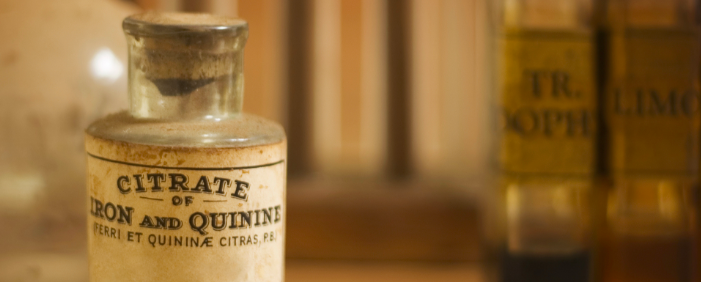
Several drugs based on plants could be in your pharmacy. Indeed, nearly half of the drugs we use today have a composition of plant origin, and a quarter contain plant extracts or active molecules directly from plants. In doing so, these plants are the most widespread treatment method in the world, even including Western countries.
Plants for drugs
Use plants to make medicines: you had to think about it! It was in 1929 that a young French pharmacist, Pierre-Joseph Leroux, managed to obtain crystals of a white substance by applying to the bark of willow (Salix alba) the same “recipe” as that allowing to extract the quinine of cinchona bark. He baptizes his salicine discovery.
It is actually a mixture of several substances, including salicylic acid, which is effective against fever, pain and rheumatoid arthritis, but causes heartburn.
In 1853, Charles Gerhardt realized in Montpellier the first laboratory synthesis of acetylsalicylic acid, a molecule close to salicylic acid, but better tolerated. A new and more convenient method of synthesis is later developed by the chemist Felix Hofmann. It is said that he had been pushed into his research by the desire to relieve the pain of his father, suffering from very painful joint rheumatism. Acetylsalicylic acid will be patented by Bayer in 1899 under the trademark Aspirin®, a name that evokes spirea (Spiraea ulmaria) or meadowsweet, another plant that contains salicylic acid. The first modern medicine was born. It still keeps first place, with 12,000 tons of aspirin sold each year in the world.
From the 1930s, the progress of chemistry will make it possible to reproduce more and more easily, by synthesis, the active principles of plants. These last do not disappear from the universe of the pharmacopoeia. On the contrary, they are now part of it for two reasons: by herbal medicine proper, on the one hand, which continues to use the whole plant or its extracts, and by a second form of therapy on the other hand, called pharmacognosia, in which the plant becomes a raw material for designing drugs. Thus today we use the active molecules of plants, sometimes slightly modified to improve their effectiveness or reduce their undesirable side effects, in the treatment of many diseases. This is the case, for example,
The discovery of new molecules and the development of new drugs continue to be an urgent necessity. Research in this area must continue, because man is still disarmed in front of a number of diseases. In this quest, plants are one of the most valuable raw materials and an irreplaceable source of innovation.
To calm his ills, man has always used plants. He attributed magical powers to them, and gradually learned to discern their properties. In the West, in ancient Greece, Hippocrates (460-377 BC), nicknamed the father of medicine, already recommended asparagus and garlic for their diuretic virtues, the poppy as hypnotic and leaves of willow to relieve pain and fever … At the beginning of our era, another Greek doctor, Dioscoride, established the first herbarium of medicinal plants. Translated into Arabic and Persian, this treatise will be used a few centuries later by the Muslim scholars, who will influence the great universities of the time, notably that of Montpellier, the most famous European center in botany.
Thanks to trade with Africa and Asia, Western plant pharmacopoeia will be enriched with many exotic plants and spices. It will now contain camphor, ginger, cinnamon, nutmeg, sandalwood, turmeric, ginseng or senna. But whether they are local plants or plants of more distant origin, their use will for a long time be based on more or less fanciful beliefs. Throughout the Middle Ages, superstitions, magic and empirical observations intertwine in plant therapeutics. From the Renaissance, science will, for the first time, reject the elixirs of alchemists and other magic remedies. The local plants, carefully harvested, are widely used in the form of herbal tea, decoction or ointment: they constitute the essential of the treatments which one has to take care of,
It was not until the beginning of the 19th century and the work of the chemists of that time (many of whom were also pharmacists) that the active principles of the plants began to be isolated. Numerous active molecules have been extracted and identified: poppy opium morphine, colchicine colchicine, belladonna atropine, cinchona bark quinine, cocoa theobromine, and so on. The discovery of digitalis dates from the same period. At the end of the 18th century, an English doctor and botanist, Dr. William Withering, became interested in this plant widely used in folk medicine against water retention. He tears the secret of his use from a healer, who herself had a family inheritance for generations of healers. In 1785, he published a study on digitalis, and reports its diuretic action and its beneficial influence on certain “heart weaknesses”. Clinical trials began in 1809 with extracts from the leaf. But it is only several years later that a French pharmacist, Claude Adolphe Nativel, succeeds in isolating the active ingredient of the plant, digitalis. The woolly digitalis now represents the basis of many pharmaceutical specialties intended to cure certain cardiac insufficiencies.